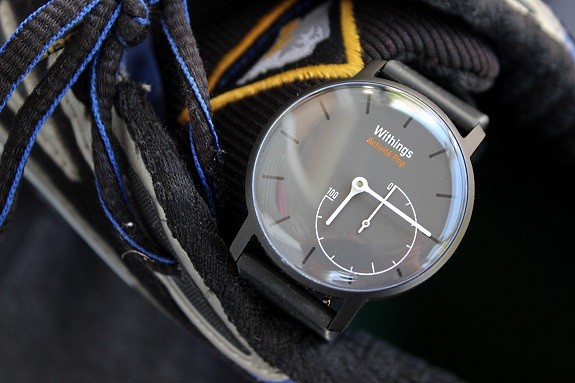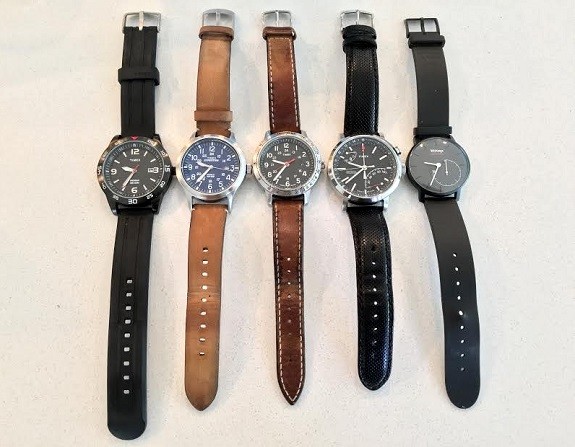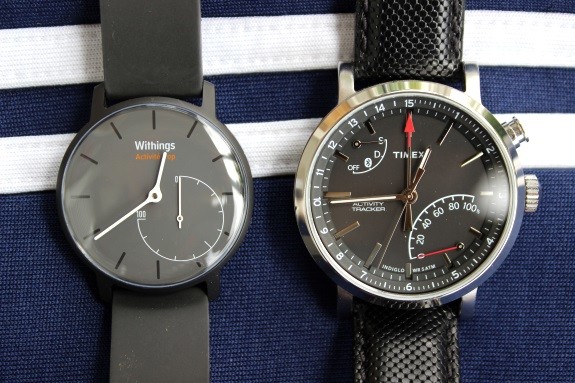About the Author: Chris W. is a workers comp claim investigator with a love of all things indie music and craft beer. When not preparing for his upcoming nuptials he can be found relaxing at home with his fianc©e and three very small dogs.
First some background; about seven years ago I was recently out of a relationship and put on a few extra pounds to my already-existing few extra pounds. I decided to do something about it and got a personal trainer. I dropped about 20 pounds and lowered my body fat by roughly 10%. I maintained this for a while, but I pushed myself a little too hard, and one injury became three, so I had to stop my workouts to recover and never really got back into it. With the decrease in exercise, I put on the weight again (and some). So six years later (and staring down my wedding day) I decided I would try again, and be less focused on beefcaking it and more on getting rid of excess fat and just being healthy. Accountability has always been my issue with fitness and I needed a motivator. I decided to try a fitness tracker to help keep me accountable without the commitment of a personal trainer.
The market for fitness wrist wear is thoroughly saturated. From glorified pedometers to high-tech gadgets that track parts of our lives we would rather keep secret (I’m looking at you Sex Tracker on Apple HealthKit), there are so many options out there it’s difficult to pick the one best fit for your needs.
After doing some research, I decided I wanted something that looked more like a watch and less like a portable EKG. There were two that I decided to give a try: the Withings Activit© Pop and the Timex Metropolitan+. I chose these two because both use low energy Bluetooth and have extended-life batteries that do not have to be charged daily. Here’s how they stacked up against each other.
Withings Activit© Pop

- Pricepoint: $149.95 via Withings but a little less via Amazon
- Case width: 36.33 mm diameter
- Case height: 11.5 mm
- Water resistance: 50m
The Withings Activit© Pop has a simple appearance, which consists of the hour and minute hands and a step tracker. In order to use the watch you need the associated app. In the app you can set your step goal as well as your body metrics. Some of the interesting features of the app include the pulse checker and sleep tracker, and the ability to sync with MyFitnessPal, Runkeeper, Nike+, and Nest. The watch itself is a lightweight steel timepiece with a silicone band. The watch case leans smaller, which allows it to be marketed as a unisex watch.
PROS
There is a lot to like about this watch. I was first drawn to the small size compared to many watches (I prefer smaller, less clunky time pieces), but was also interested in the sleep tracker. I also wanted a watch with a band that you could get wet, and with the silicone band you can hop in the pool or the shower without having to worry about wearing a wet leather band the rest of the day. Another interesting feature is the time setting. There’s no crown on the watch. You set the time via the app allowing it to be worn right or left-handed without anything digging into your wrist while working out.

The interactive app makes reaching goals more interesting.
Regarding the app, there are different “badges” you can earn based on your activity to help motivate you, from daily badges based on the number of steps you have taken, to progress-based badges informing you of the total distance you have walked using famous geographic locales. (For example, when I walked 100km, it told me I walked the distance of Loch Ness. Kinda a cool detail.) This feature helps put your activity into perspective and I found that it really does motivate you to reach the next badge. It’s the little things, right? Also, the step counter resets to 0% when you reach 100% of your goal and then begins recalculating additional steps as a percentage beyond 100%. The pulse checker feature simplifies getting your pulse and stores your pulse entries.
CONS
While there is a lot to love about the watch, it is not without its faults. It has a vibrating alarm feature that you can check by tapping the display, but I could never get it to work when I wanted it to. For some reason, every time I made a call on my work phone (a traditional land-line phone), it would activate, but when I tried to replicate the dialing movements with my hand, it wouldn’t work. Clearly I’m technically inept. I also had issues with wearing it at night for the sleep tracker feature. Wearing a silicone band all day, every day leaves your wrist with little options for breathing and it gets quite sweaty at times. I developed a mild skin irritation under the band, which may have been impacted by my sensitive skin (I’m sensitive!). I also found that wearing the watch at night affected my sleeping because I… well… I’ve never worn a watch to bed before.
Timex Metropolitan+

- Price point: $125 via Timex but can be a little less (or… more?) via Amazon
- Case width: 42 mm diameter
- Case height: 13 mm
- Water resistance: 50m
I’m a huge fan of Timex because they’re the only watch manufacturer that can withstand the abuse I seem to dish out. The Metropolitan+ is no exception when it comes to that durability. The watch is a bit larger in circumference (42mm) and significantly thicker than the Withings Pop. But that being said, it’s not the size of an Altimeter. The watch face is only slightly larger than my Timex Expedition Scout, my favorite from the Timex lineup. It does not have all the bells and whistles of other fitness trackers, and I would describe it as more of a step counter/watch combo than a full-blown fitness tracker.
The app the watch connects to is pretty simple to use, but it’s also quite basic. It will calculate your steps and distance, which can be tracked independently. Once you have entered your height into the app, it is able to calculate the distance of each stride. The biggest thing the Metropolitan+ has going for it is that it looks more like a real watch. Like other Timex watches, the Metropolitan+ comes with the Indiglo feature, another of my favorite aspects to their products.

Told you I like a good ol’ Timex.
PROS
Unlike the Withings step tracker, which resets to 0 after you reach 100% of your steps and then begins tracking again, the Metropolitan+ tracker uses two different counters. The percent tracker stops when you reach 100% of your goal. If you want to know your actual distance or steps, you need to look at the step/distance counter hand (the red tipped hand). This brings me to another positive feature I like about the watch. If you don’t care about the number of steps you take each day, you can track by distance. I didn’t really use this feature, but I know some people who are more motivated by how far they go rather than how many steps they take. You can set a daily distance goal, such as 3.5 miles, and check it throughout the day to see how far you have gone.
CONS
While the Timex was my preferred everyday option of the two, it did have some flaws. Currently, the Timex Connect app does not link with MyFitnessPal or Runkeeper, which are two of my go-to fitness apps. The Timex Connect app is pretty basic, at least when it comes to this watch. The Metropolitan+ setup is a bit more challenging to use and requires more reading of the owner’s manual. It is easier than understanding IKEA assembly instructions, but does take some work. Once you know how to use it, however, it is pretty easy. Unlike all my other Timex watches it does not provide a numerical date indicator on the face, which is something I like on a watch I wear to work. The watch is, as stated above, a bit thicker which makes it kind of bulky on the wrist. This results in getting the crown jabbed into your wrist when you’re typing on a computer. I also smacked my wrist on quite a few door frames. Finally, if you wear the watch while swimming and don’t switch to one of the available silicone bands, expect to have a wet wrist for a while because the leather band takes several hours to dry out.

Final Thoughts
Both of these watches should satisfy someone looking for a basic fitness tracker, and would be a good introduction for anyone just getting into the fitness tracker trend. I found the Timex Metropolitan+ more of an everyday wear-to-work watch/tracker than the Withings Pop. It has the professional appearance of a regular watch. The Withings Pop is my go-to when I head out for a hike or go to the gym. It is a little more sporty and sweat friendly than the Timex, and the connection to other apps allows my hikes and workouts to get linked across multiple apps.
All that being said, the Withings Activit© Pop would be my preferred fitness tracker if we’re strictly talking fitness, but the Timex Metropolitan+ is the more “stylish” option, and still gets the job done, albeit with fewer bells and whistles when it comes to the app.
Footnote: Wearing these two watches over the course of a couple months helped me drop 12 pounds and 5% body fat. Not too shabby.